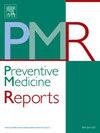美国中西部社区卫生中心网络在COVID-19发病后癌症筛查的初始和持续变化
IF 2.4
3区 医学
Q2 PUBLIC, ENVIRONMENTAL & OCCUPATIONAL HEALTH
引用次数: 0
摘要
目的评估COVID-19发病后社区卫生中心(CHCs)乳腺癌、宫颈癌和结直肠癌筛查的长期变化。方法:在美国中西部的27个chc中,我们研究了2019年1月至2021年10月期间标准电子临床质量测量和基于测试量的癌症筛查措施的趋势。检测量措施包括完成的癌症筛查检测次数、实际与预期累积完成检测次数之间的差异(即大流行筛查差距),以及最近的检测比率(即最近接受筛查的个人在过去一年中完成检测的比例)。结果:标准的癌症筛查质量指标仅显示出适度的变化。相比之下,测试量测量显示出巨大而持久的缺陷。在2020年初筛查活动急剧下降后,活动恢复了,但未能达到大流行前的水平。因此,随着时间的推移,大流行筛查的差距继续扩大,乳腺癌筛查减少了约5400例,宫颈癌筛查减少了8600例,结直肠癌筛查减少了4500例。这意味着检测数量减少了16 - 18%,相当于3.5-4.0个月的大流行前专门癌症筛查活动。最近的检测比率在2020年也有所下降,也未能恢复到大流行前的水平。结论2019冠状病毒病发病后,我们的CHC网络中癌症筛查持续呈阴性变化。与标准质量度量相比,在检查测试量时,这种变化更为明显。了解和解决持续存在的大流行性癌症筛查差距对于限制与癌症有关的健康负担和差距至关重要。本文章由计算机程序翻译,如有差异,请以英文原文为准。
Initial and persistent changes in cancer screening in a US Midwestern community health center network following the onset of COVID-19
Objective
To assess longer-term change in breast, cervical, and colorectal cancer screening among Community Health Centers (CHCs) following onset of COVID-19.
Methods
Among 27 CHCs in the US Midwest, we examine trends in standard electronic clinical quality measures and test-volume based cancer screening measures from January 2019 through October 2021. Test-volume measures include the number of cancer screening tests completed, the difference between the actual versus expected cumulative number of tests completed (i.e. pandemic screening gap), and the recent testing ratio (i.e. proportion of individuals up-to-date on screening who completed testing in the past year).
Results
Standard cancer screening quality measures showed only modest changes. In contrast, test-volume measures show large and persistent deficits. After a sharp drop in screening activity in early 2020, activity resumed but failed to reach pre-pandemic levels. As a result, the pandemic screening gap continued to grow larger over time reaching approximately 5400 fewer breast, 8600 fewer cervical, and 4500 fewer colorectal cancer screenings performed. This represents a 16–18 % deficit in the number of tests and is the equivalent of 3.5–4.0 months of dedicated pre-pandemic cancer screening activity. The recent testing ratio also decreased in 2020 and also failed to return to pre-pandemic levels.
Conclusions
Following onset of COVID-19, there was a persistent negative change in cancer screening in our CHC network. This change is more evident when examining test-volume compared to standard quality metrics. Understanding and addressing the persistent pandemic cancer screening gap is critical to limit health burdens and disparities related to cancer.
求助全文
通过发布文献求助,成功后即可免费获取论文全文。
去求助
来源期刊

Preventive Medicine Reports
Medicine-Public Health, Environmental and Occupational Health
CiteScore
3.90
自引率
0.00%
发文量
353
 求助内容:
求助内容: 应助结果提醒方式:
应助结果提醒方式:


